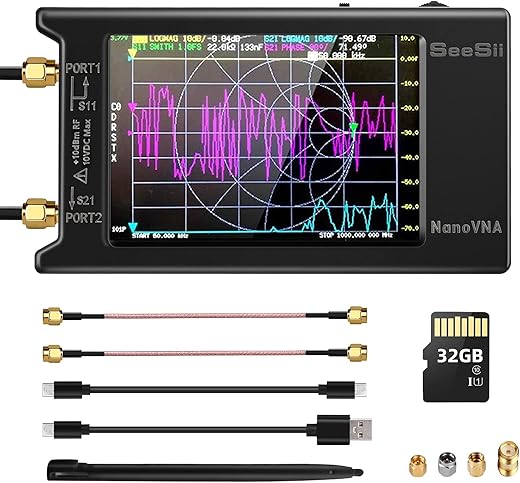









Unlocking the Power of Data Analysis: A Comprehensive Guide
In today’s digital age, data is the new gold. Companies, organizations, and even individuals are sitting on mountains of data, but how do you transform that raw information into actionable insights? Enter the data analyzer. This essential tool can help you sift through the noise, revealing patterns and trends that can drive decision-making. In this article, we’ll explore what a data analyzer is, why it’s crucial, and how you can leverage it effectively.
What is a Data Analyzer?
At its core, a data analyzer is a software tool or a platform that processes, organizes, and interprets data. Think of it as a magnifying glass for your data—allowing you to zoom in on relevant details while filtering out the clutter. Whether you’re dealing with sales figures, customer feedback, or website analytics, a data analyzer can help you make sense of it all.
Why is Data Analysis Important?
Data analysis is essential for several reasons:
1. **Informed Decision-Making**: Imagine trying to navigate through a dense fog without any visibility. That’s how business decisions feel without data analysis. It provides clarity and direction, allowing businesses to make informed choices.
2. **Identifying Trends**: The ability to spot trends can give you a competitive edge. For instance, if your data shows a rising interest in a particular product, you can adjust your inventory or marketing strategy accordingly.
3. **Enhancing Efficiency**: Data analysis can reveal inefficiencies in processes. By understanding where bottlenecks occur, you can streamline operations, saving both time and money.
4. **Customer Insights**: Understanding customer behavior is crucial. Data analysis helps you grasp what your customers want, how they act, and their pain points. This knowledge allows you to tailor your offerings to meet their needs better.
Types of Data Analyzers
When it comes to data analyzers, there’s no one-size-fits-all solution. Here are some popular types:
1. **Descriptive Analytics**: This type looks at historical data to understand what has happened in the past. It’s akin to reading a storybook—where you gather insights from the plot’s progression.
2. **Predictive Analytics**: Want to foresee the future? Predictive analytics uses statistical algorithms and machine learning techniques to identify the likelihood of future outcomes based on historical data. Think of it as a crystal ball, but one rooted in data!
3. **Prescriptive Analytics**: This goes a step further by recommending actions based on the data insights. It’s like having an expert advisor at your side, guiding you on the best course of action.
How to Choose the Right Data Analyzer
Choosing the right data analyzer can feel overwhelming with so many options available. Here are some factors to consider:
1. **Ease of Use**: Look for tools that are user-friendly. If you find yourself lost in a sea of complicated features, you’re less likely to use the analyzer effectively.
2. **Integration**: Ensure the analyzer can integrate seamlessly with your existing systems. Compatibility is key to a smooth process.
3. **Scalability**: As your data grows, your analyzer should be able to grow with it. Choose a solution that can handle increasing amounts of data without compromising performance.
4. **Cost**: Finally, consider your budget. There are many free tools available, but investing in a paid solution might offer more advanced features that could be worth the cost.
Getting Started with Data Analysis
Now that you understand the importance of data analyzers, you might be wondering how to get started. Here’s a simple step-by-step guide:
1. **Define Your Objectives**: What do you want to achieve with data analysis? Are you looking to boost sales, improve customer satisfaction, or streamline operations? Clear objectives will guide your analysis.
2. **Collect Data**: Gather the relevant data from various sources. This could include sales records, customer surveys, website traffic, and more.
3. **Choose Your Analyzer**: Based on the factors mentioned earlier, select a data analyzer that fits your needs.
4. **Analyze the Data**: Use the tool to explore your data. Look for patterns, correlations, and anomalies. Don’t forget to visualize your findings with graphs or charts for better understanding.
5. **Take Action**: Based on the insights gained, develop strategies and take action! Remember, analysis is only as good as the actions it inspires.
Conclusion
Data analyzers are indispensable in today’s data-driven world. They empower individuals and organizations to make informed decisions, identify trends, and enhance efficiency. By understanding the different types of data analyzers, choosing the right one, and following a systematic approach to data analysis, you can unlock the full potential of your data. So, are you ready to dive into the world of data analysis and transform your insights into action?
FAQs
1. What is the difference between descriptive and predictive analytics?
Descriptive analytics focuses on summarizing historical data to understand what has happened, while predictive analytics uses that historical data to forecast future outcomes.
2. Can I use free data analyzers for my business?
Yes, there are many free data analyzers available that can be effective for small businesses. However, as your needs grow, you might consider investing in more advanced, paid solutions.
3. How can I ensure data accuracy when analyzing?
To ensure data accuracy, regularly clean and validate your data, use reliable sources, and implement checks and balances within your data collection processes.
